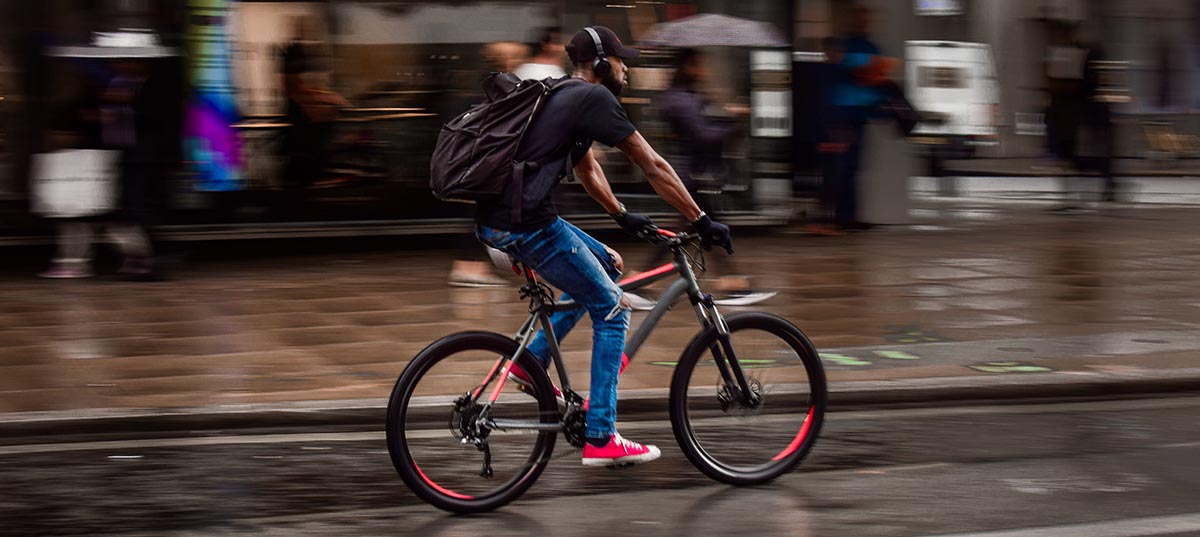
29 Sep, 2021/ by National Accident Helpline /Campaigns
How to stay safe on the roads
Our roads and transport links are getting busier and are slowly returning to pre-pandemic levels. This was proven on Monday 6th September when TfL recorded its busiest day on the tubes since March 2020. With this in mind, we have compiled a list of our top ten tips for keeping safe as road users.
Every day in Britain, five people are killed and more than sixty are seriously injured in road accidents across Britain. This shocking statistic reminds us of the importance of staying safe on the roads. But are we aware of what it takes to stay safe?
Know the roads
Last year we conducted a survey revealing a surprising 40% of respondents were unaware of the changes to the Highway Code that were introduced in October 2020. With the government due to make more Highway Code updates in autumn 2021, it's likely the trend will continue this year. The Department for Transport has proposed the concept of a “hierarchy of road users” which places greater responsibility on drivers for the safety of other vulnerable road users.
The proposed changes would make explicit that cyclists and pedestrians have priority when travelling straight ahead at junctions, supporting the increase of vulnerable road users we've seen through the pandemic. Over the past year, there has been an increase of 24% of cyclists on the road, a quarter more than in 2019. The research found that 46% of cyclistshave been in an accident on the UK's roads in the past and we're concerned this number will continue to rise.
Handy hints
As a reminder of how you can stay safe on the roads, be it when walking, cycling, driving, or scooting, here are our 10 top tips to stay safe:
- Always protect yourself with a helmet when cycling or a seatbelt when in a car.
- Stop, look and listen when approaching pedestrian crossings. Wait to make sure the vehicle has stopped before you set foot onto the crossing.
- Make sure your headlights are on when required for full visibility.
- ‘Wipers on, lights on.' A simple phrase to help us remember that rain usually means impaired visibility, so it's a good idea to switch your vehicle's lights on.
- Take special care when opening car doors. Use your mirror but also look over your shoulder as you slowly open the door to check no cyclists or vehicles are coming.
- Improve your visibility while cycling by wearing ankle reflectors. Simple, easy and cheap - but thought to be especially effective due to the motion involved.
- Avoid wearing earphones while cycling or having loud music in your car, especially in heavy traffic where being able to hear what's happening around you is important.
- Cut out the multitasking, especially on busy roads. Focus on driving instead of eating, drinking or having any contact with devices.
- Keep your distance. Just because the roads are busier doesn't mean you should reax the ‘two second rule' for keeping a safe distance from the car in front.
- Motorists: If you haven't ridden a bike for a while, borrow one and go for a ride. You may get a fresh perspective on how you as a motorist can keep cyclists safe.
Learn the law
In addition to the updated Highway Code, which prioritises the safety of cyclists and pedestrians, new driving laws have been introduced since the lockdown. This includes banning drivers from touching a mobile device while they are in their vehicle, and a fine of £200 plus six points if you are caught.
It is clear the government is trying to increase safety on the roads whilst carefully monitoring the environmental impact of transport. The use of e-scooters is currently being trialled in 49 locations across the UK as an eco-friendlier type of transport. We appreciate and salute their green credentials but safety is paramount. Since 2020, 70 people have been injured as a result of using them, and 11 have been left seriously injured. We urge anyone who uses an e-scooter to wear a helmet as this could save you from serious harm.
How we move forward safely
Any number of road traffic accidents is one too many. However, we're hopeful that with this guide we can help make people aware of simple changes that can be made to keep everyone safe.
For more information please visit our road traffic accidents page.